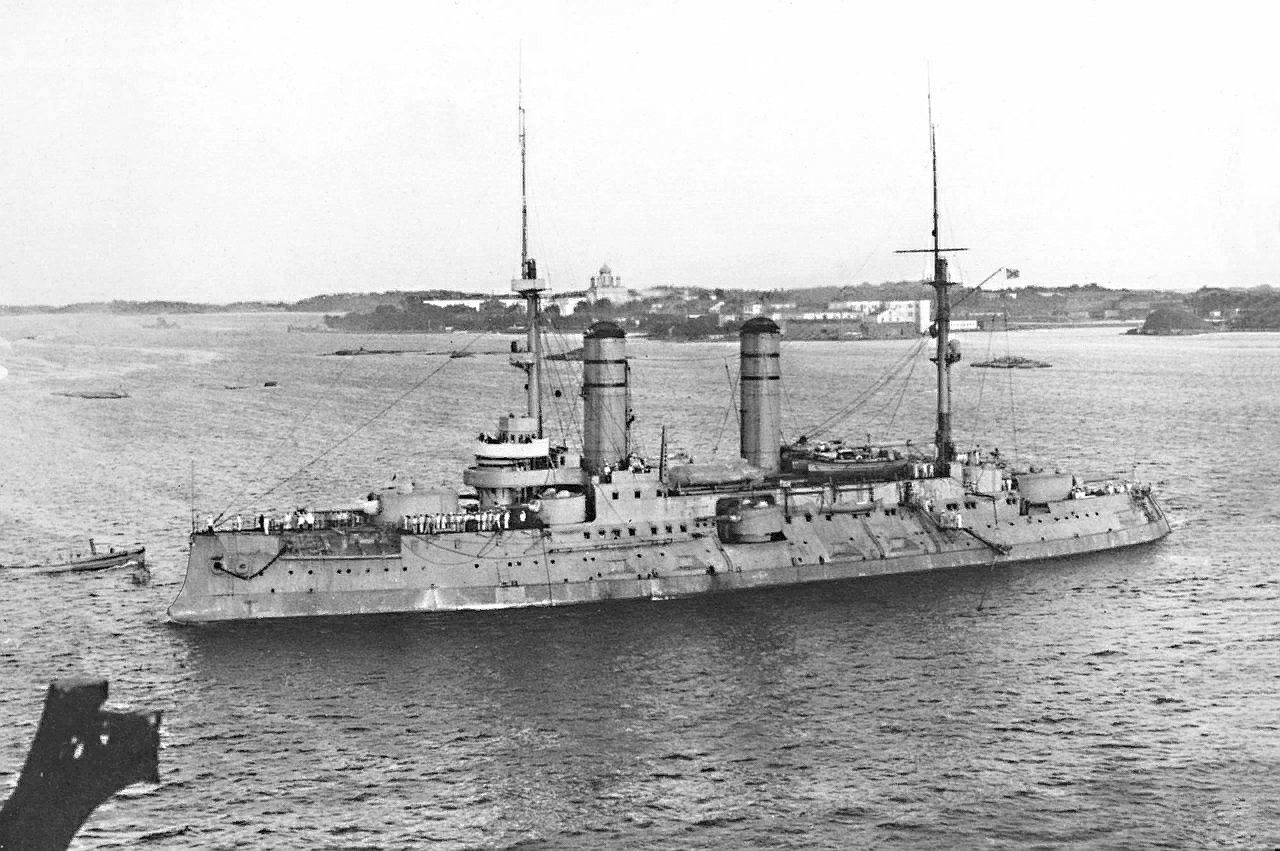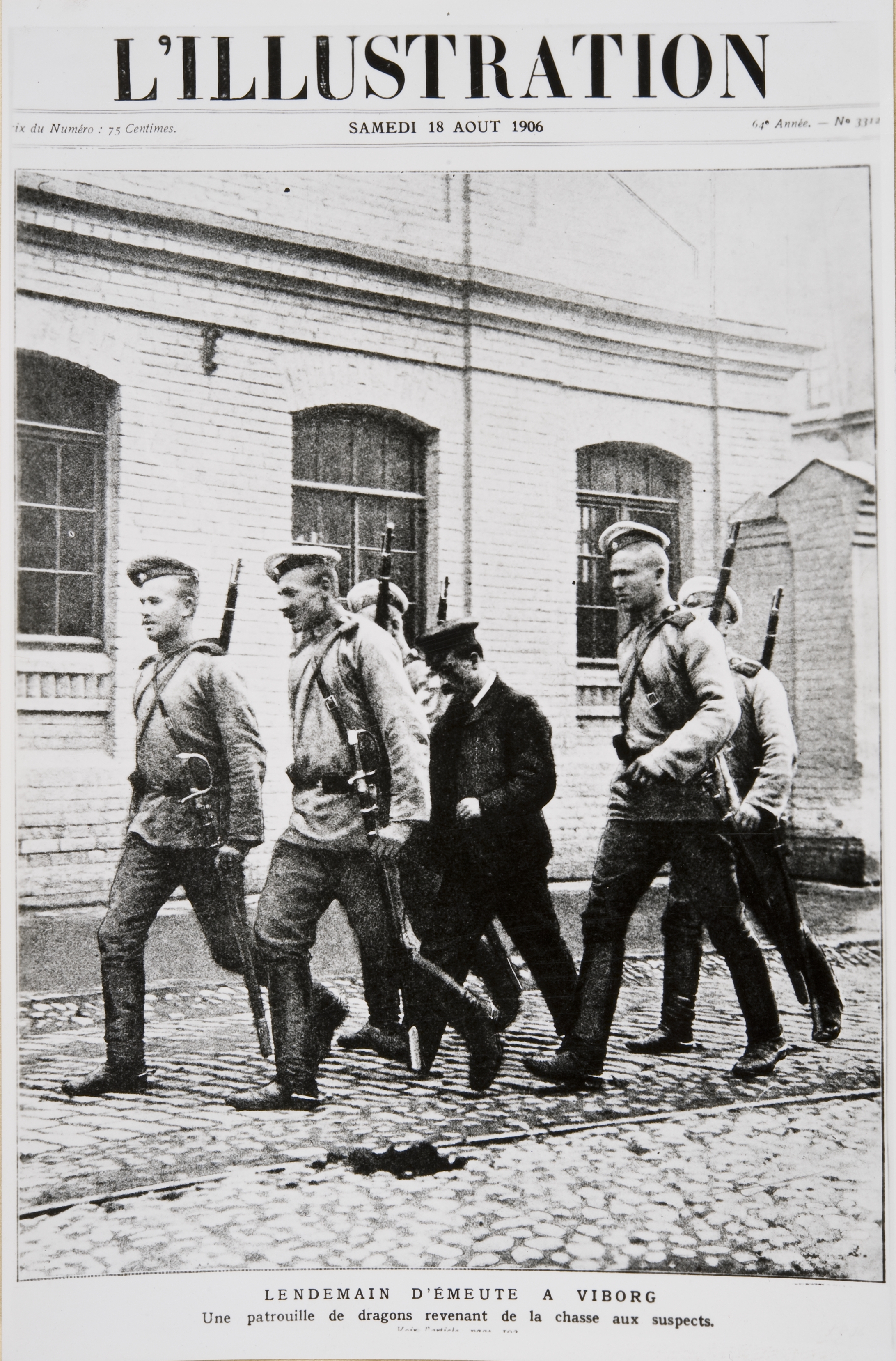Viapori Rebellion on:
[Wikipedia]
[Google]
[Amazon]
The Sveaborg rebellion was an Imperial Russian military mutiny which broke out on the evening of 30 July 1906 amongst the garrison of the coastal fortress of Sveaborg in the coast of
 The mutiny broke out on the evening of 30 July, earlier than the military conspirators had planned. Poor food and the withdrawal of a special allowance had, however, sparked discontent amongst the pioneers and artillerymen of the garrison, most of whom were conscripts drawn from industrial regions of Russia. The pioneer company was particularly unsettled and had been put under collective arrest by the general commanding the Sveaborg Fortress and neighboring outposts. In response most of the artillerymen mutinied, expelling or imprisoning their officers. By daylight on 31 July about 2,000 men had joined the mutiny. The infantry component of the garrison, drawn from rural areas and more amenable to army discipline than their radicalised counterparts in the technical branches, mostly remained loyal to their officers.
The mutiny broke out on the evening of 30 July, earlier than the military conspirators had planned. Poor food and the withdrawal of a special allowance had, however, sparked discontent amongst the pioneers and artillerymen of the garrison, most of whom were conscripts drawn from industrial regions of Russia. The pioneer company was particularly unsettled and had been put under collective arrest by the general commanding the Sveaborg Fortress and neighboring outposts. In response most of the artillerymen mutinied, expelling or imprisoning their officers. By daylight on 31 July about 2,000 men had joined the mutiny. The infantry component of the garrison, drawn from rural areas and more amenable to army discipline than their radicalised counterparts in the technical branches, mostly remained loyal to their officers.
 The leaders of the mutiny hoped that their example would lead to uprisings amongst the sailors of the Baltic Fleet from the naval bases at Helsinki and
The leaders of the mutiny hoped that their example would lead to uprisings amongst the sailors of the Baltic Fleet from the naval bases at Helsinki and
 A few hundred members of the Finnish Labour Corps had joined with the Russian mutineers and Johan Kock had called for a general strike in support of them. However, fighting broke out in
A few hundred members of the Finnish Labour Corps had joined with the Russian mutineers and Johan Kock had called for a general strike in support of them. However, fighting broke out in
Helsinki
Helsinki ( or ; ; sv, Helsingfors, ) is the Capital city, capital, primate city, primate, and List of cities and towns in Finland, most populous city of Finland. Located on the shore of the Gulf of Finland, it is the seat of the region of U ...
in the Grand Duchy of Finland
The Grand Duchy of Finland ( fi, Suomen suuriruhtinaskunta; sv, Storfurstendömet Finland; russian: Великое княжество Финляндское, , all of which literally translate as Grand Principality of Finland) was the predecessor ...
. The mutiny was part of the aftermath of the Russian Revolution of 1905
The Russian Revolution of 1905,. also known as the First Russian Revolution,. occurred on 22 January 1905, and was a wave of mass political and social unrest that spread through vast areas of the Russian Empire. The mass unrest was directed again ...
, which by summer 1906 had effectively been suppressed in most other regions of the Russian Empire.https://www.shsu.edu/eng_ira/finnishstudies/Finnish%20Tables%20of%20Content/JoFs_Vol%2018.2.pdf#page=41
Background
The Fortress of Sveaborg had been constructed in the 18th century to provide sea defenses forHelsinki
Helsinki ( or ; ; sv, Helsingfors, ) is the Capital city, capital, primate city, primate, and List of cities and towns in Finland, most populous city of Finland. Located on the shore of the Gulf of Finland, it is the seat of the region of U ...
. In 1906 it was garrisoned by approximately 1,800 artillerymen, 1,500 infantrymen and 250 pioneers. The combined force of over 3,500 made up over half of the total Tsarist troops based in and around Helsinki. All of these troops were Russian as no Finnish units of the Imperial Army were stationed in the Grand Duchy.
Leadership
The ringleaders of the rising were three junior Russian officers in the garrison: Captain Sergei Tsion and Lieutenants Emelyanv and Kokhanskiy. Tsion, who was a secretBolshevik
The Bolsheviks (russian: Большевики́, from большинство́ ''bol'shinstvó'', 'majority'),; derived from ''bol'shinstvó'' (большинство́), "majority", literally meaning "one of the majority". also known in English ...
sympathizer, had made contact with a Finnish Labour Corps leader Johan Kock
Captain Johan Kock (4 June 1861 – 13 April 1915) was a Finland, Finnish soldier who had been decommissioned from the Finnish Defence Forces, Finnish army in Viipuri in 1897. Kock was a revolutionary who was the leader of the Red Guards (Finland) ...
. The Labour Corps were an anti-Tsarist political movement that favored social revolution in Finland. They were believed to number over 6,000 members and had, since the major disturbances of 1905 within Russia itself, been preparing for a Finnish uprising. They were, however, poorly armed and untrained.
Mutiny
 The mutiny broke out on the evening of 30 July, earlier than the military conspirators had planned. Poor food and the withdrawal of a special allowance had, however, sparked discontent amongst the pioneers and artillerymen of the garrison, most of whom were conscripts drawn from industrial regions of Russia. The pioneer company was particularly unsettled and had been put under collective arrest by the general commanding the Sveaborg Fortress and neighboring outposts. In response most of the artillerymen mutinied, expelling or imprisoning their officers. By daylight on 31 July about 2,000 men had joined the mutiny. The infantry component of the garrison, drawn from rural areas and more amenable to army discipline than their radicalised counterparts in the technical branches, mostly remained loyal to their officers.
The mutiny broke out on the evening of 30 July, earlier than the military conspirators had planned. Poor food and the withdrawal of a special allowance had, however, sparked discontent amongst the pioneers and artillerymen of the garrison, most of whom were conscripts drawn from industrial regions of Russia. The pioneer company was particularly unsettled and had been put under collective arrest by the general commanding the Sveaborg Fortress and neighboring outposts. In response most of the artillerymen mutinied, expelling or imprisoning their officers. By daylight on 31 July about 2,000 men had joined the mutiny. The infantry component of the garrison, drawn from rural areas and more amenable to army discipline than their radicalised counterparts in the technical branches, mostly remained loyal to their officers.
Suppression
 The leaders of the mutiny hoped that their example would lead to uprisings amongst the sailors of the Baltic Fleet from the naval bases at Helsinki and
The leaders of the mutiny hoped that their example would lead to uprisings amongst the sailors of the Baltic Fleet from the naval bases at Helsinki and Kronstadt
Kronstadt (russian: Кроншта́дт, Kronshtadt ), also spelled Kronshtadt, Cronstadt or Kronštádt (from german: link=no, Krone for "crown" and ''Stadt'' for "city") is a Russian port city in Kronshtadtsky District of the federal city of ...
. However, the naval unrest of the previous year had now subsided and the crews of the warships close to Sveaborg showed no inclination to join the mutiny. Equally, the Cossack
The Cossacks , es, cosaco , et, Kasakad, cazacii , fi, Kasakat, cazacii , french: cosaques , hu, kozákok, cazacii , it, cosacchi , orv, коза́ки, pl, Kozacy , pt, cossacos , ro, cazaci , russian: казаки́ or ...
cavalry and the infantry units that made up the remainder of the Imperial Army forces in Finland continued to obey orders. Although the mutineers were able to capture nearby Katajanokka
Katajanokka ( sv, Skatudden) is a neighbourhood of Helsinki, Finland, with around 4000 inhabitants in 2005. The district is located adjacent to the immediate downtown area, though in the first major town plan for Helsinki from the mid-18th cent ...
, the rising quickly lost momentum. Following a naval bombardment on 1 August, the bulk of the mutinous artillerymen and pioneers surrendered to loyal troops. The mutiny had lasted only 60 hours. Emelyanv and Kokhanskiy were executed, although Tsion's fate is uncertain.
Finnish involvement
 A few hundred members of the Finnish Labour Corps had joined with the Russian mutineers and Johan Kock had called for a general strike in support of them. However, fighting broke out in
A few hundred members of the Finnish Labour Corps had joined with the Russian mutineers and Johan Kock had called for a general strike in support of them. However, fighting broke out in Hakaniemi
Hakaniemi (; sv, Hagnäs) is an unofficial district of Helsinki, the Finnish capital. It covers most of the neighbourhood of Siltasaari in the district of Kallio. Hakaniemi is located at the sea shore and is separated from the city centre by the ...
, between Russian sailors from the naval barracks and Finnish "Whites", acting in opposition to Kock's "Reds". There were several dozen casualties before Tsarist forces were able to restore order. Johan Kock was able to escape to Sweden
Sweden, formally the Kingdom of Sweden,The United Nations Group of Experts on Geographical Names states that the country's formal name is the Kingdom of SwedenUNGEGN World Geographical Names, Sweden./ref> is a Nordic country located on ...
and ultimately to England
England is a country that is part of the United Kingdom. It shares land borders with Wales to its west and Scotland to its north. The Irish Sea lies northwest and the Celtic Sea to the southwest. It is separated from continental Europe b ...
.
Reasons for failure
In spite of the numbers involved the "Sveaborg Rebellion" proved far less of a threat to the Tsarist government than the mutinies of the previous year had done. The reasons included the indifference of the bulk of the Finnish population to any dissatisfaction within the Russian occupying forces and the fact that by August 1906 discipline and morale had been largely restored within the Tsarist army and navy.References
{{Reflist 1905 Russian Revolution Rebellions against the Russian Empire Suomenlinna Conflicts in 1906 1906 in Finland 20th-century rebellions Rebellions in Finland July 1906 events August 1906 events